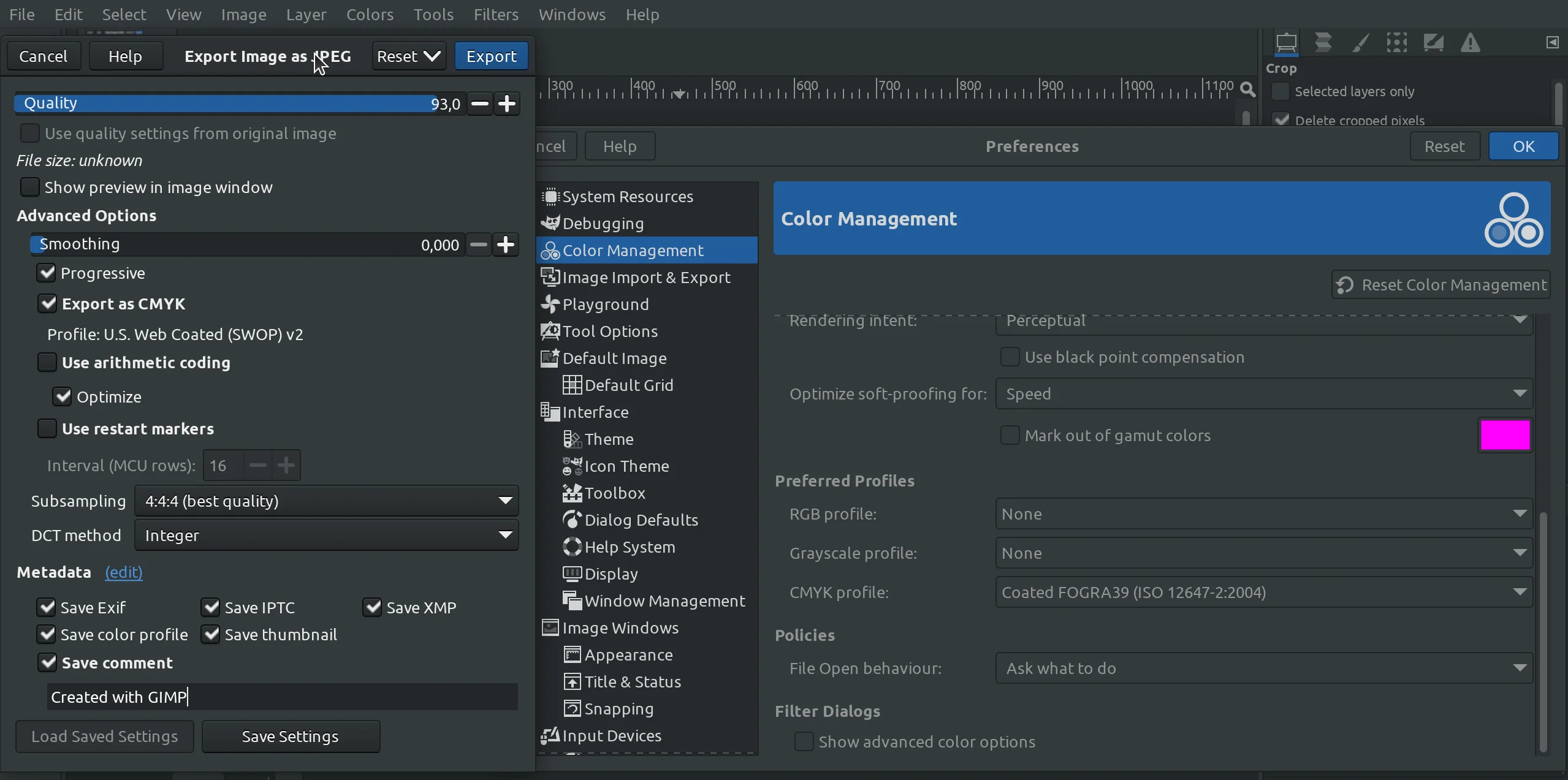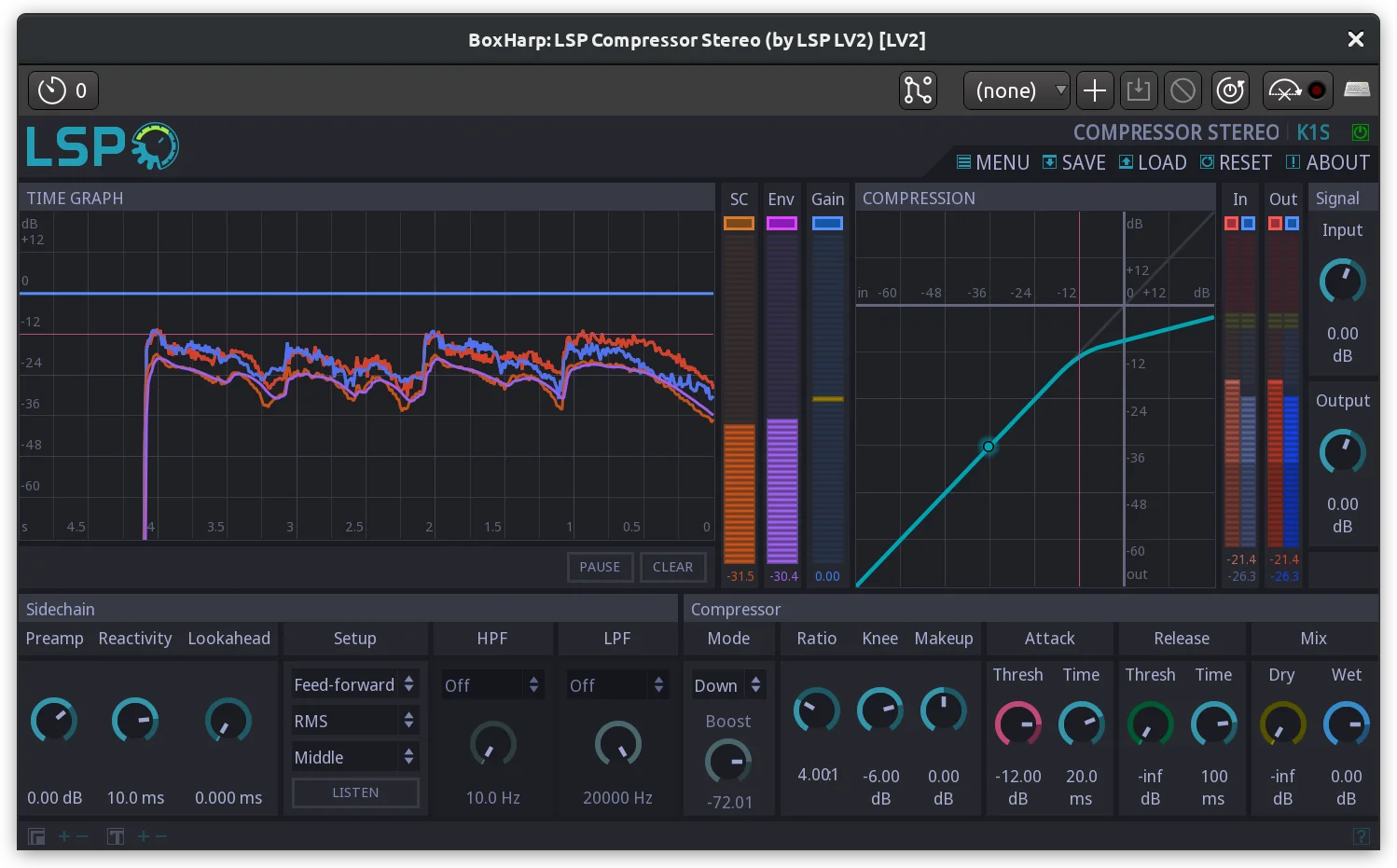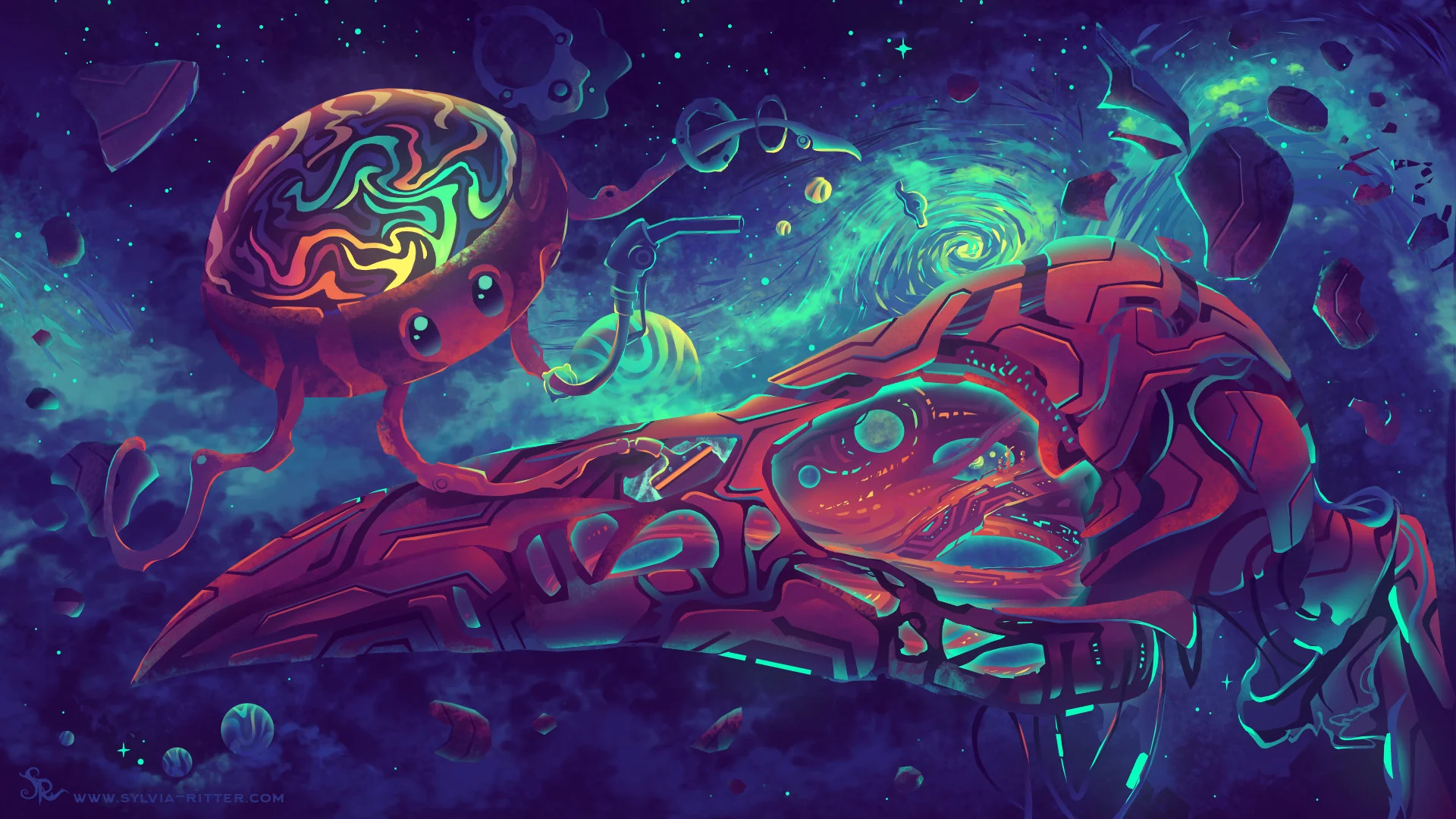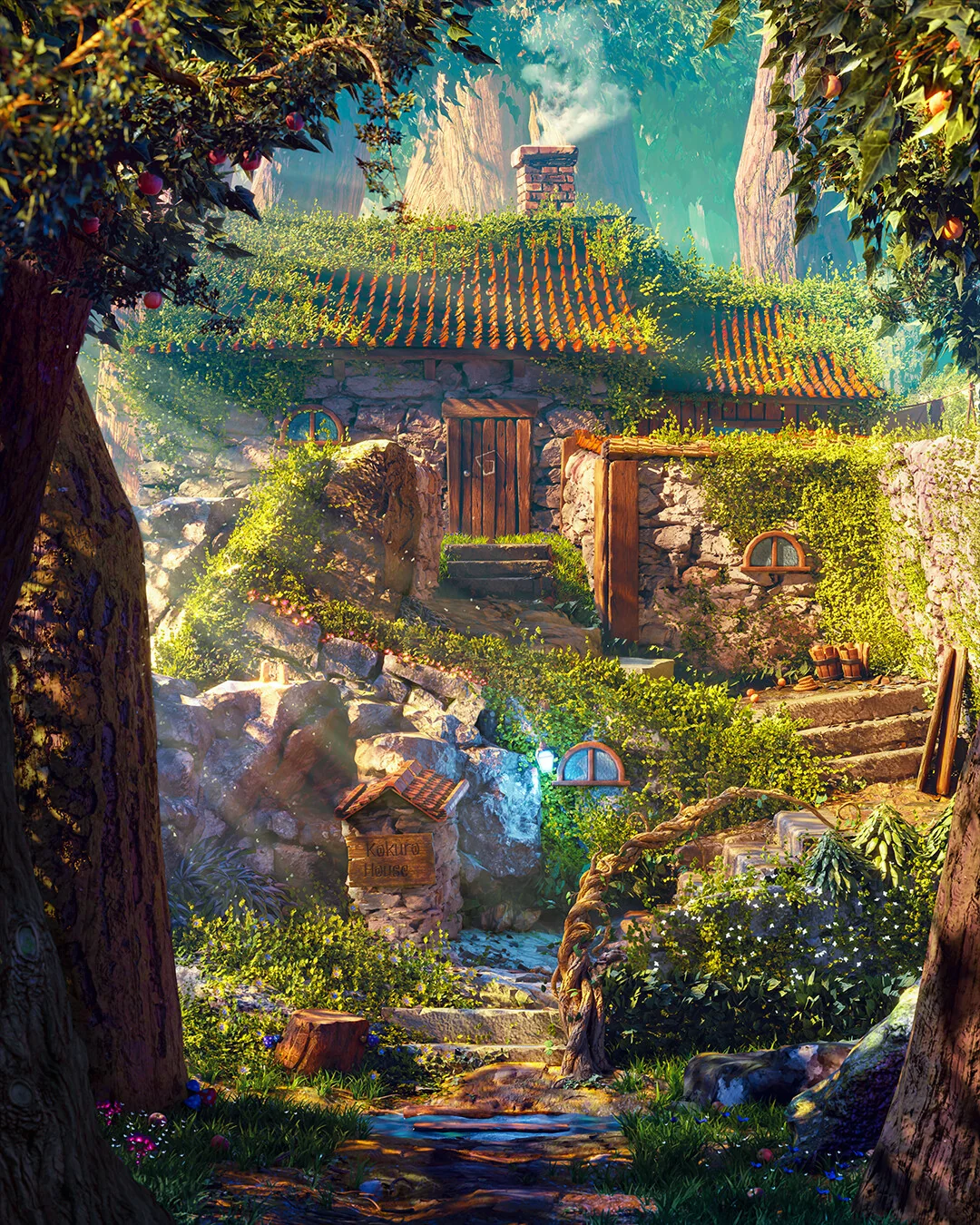Highlights: new Krita book, GIMP is finally getting some CMYK features, there have been new releases of OpenToonz, Kdenlive, Zrythm, LSP and Noise Repellent plugins, and more.
GIMP and ongoing CMYK work
The most interesting thing going on with GIMP right now is the work by new contributor NikC and Jehan. They recently added CMYK JPEGs exporting and have three more related patches in the pipeline: correct CMYK TIFFs loading, CMYK TIFFs exporting, and a rewrite of the CMYK color selector to use the babl library.
Please note that instead of using the preferred CMYK profile the CMYK JPEG exporter will use whatever softproofing profile you told GIMP to use (not sure why you would want two different CMYK profiles, but not using the preferred profile seems like an omission anyway).

Of course, all of this does not qualify as a full-blown CMYK mode, nor do I expect there to be one eventually: the entire GIMP team have been in favor of late binding the whole time. But this is still an important step forward.
For starters, the patches will replace much of the venerable separate+ plugin that added alternative JPEG/TIFF importers/exporters rather than patching existing ones. And since GIMP has had softproofing for years, you can pretty much expect a late binding workflow to land to v3.0. Not too shabby!
Inkscape v1.2 is close
There’s probably just a few more weeks till the Inkscape team delivers the annual major update. Version 1.2 is coming with multi-page support, smart guides, combined Layers/Objects dialog, redesigned Export dialog, and so much more.
Meanwhile, new features are already accumulating for v1.3 release some time in 2023 presumably. The most exciting feature so far is optional OpenGL canvas contributed by contributor PBS.
CAD Sketcher update
Hlorus recently renamed the Geometry Sketcher add-on for Blender to CAD Sketcher and made it available on Gumroad to fund his work on it.
All I can really say about the changes in the past few months is I don’t even know where to begin — there’s just so many changes and improvements and new features. Just give it a spin, will you? :) Something I’m sure you will appreciate is documentation that is also available now.
And if you are completely new to this, Architecture Topics got you covered:
OpenToonz 1.6
This is an update from ca. 1 month ago, but it wasn’t discussed much online. The release notes is really impressive: linear transfer function option for all layer blending modes, OpenEXR importing/rendering, 30-bit display support, X-sheet zoom control, TVPaint JSON export, multi-thread FFmpeg-based rendering, Lock Alpha for bitmaps, and more. Here is an overview by Darren T:
Kdenlive 22.04
I can wax lyrical about effect templates, or HiDPI support, or OpenTimelineIO improvements all I like. The most welcome change — to me — is the initial 10-bit support, sans effects for now. That’s the really important thing. If you shoot to log, there’s just no point in capturing 8-bit, you don’t really get all the benefits of a linear transfer function. But until recently, very few NLEs on Linux could manage 10-bit. I’m glad Kdenlive is joining their ranks.
See here for the entire release notes.
Olive
Yes, that one NLE that just can’t seem to reach v0.2 release milestone :) Quite a few important changes lately: markers rewrite, audio recording tool reimplemented, text options now available right on the sequence preview. Here is my quick and dirty demo:
By the way, if you keep the defaults for marker settings, which means that the end time would be the same as the start time, the marker will be visually the same as before: just a bookmark-shaped little thing. OTOH, marking a whole range is really convenient. You can color-code entire ranges in red with a ‘FIXME’ label to make notes of problematic areas in a sequence.
The snapping system has also been reworked and improved, but so far I have been unable to tell the difference. It just works nicely, same as before.
Zrythm
I know it’s been two months since my last recap, and there’s a new pre-release of Zrythm every week, so let’s focus on just the last two. There’s still plenty of new stuff to mention.
The most user-visible change is the use of libpanel for docking. It works just like in anywhere else. You grab a docked panel, drag it, and all possible docking target get highlighted to give you a hint.
Then there’s a new exporting dialog:
new export dialog coming!#Zrythm #libadwaita #gtk4 pic.twitter.com/QfUpMZieoo
— Zrythm DAW (@ZrythmDAW) April 26, 2022
The latest update also got more bundled plugins: Flanger, Phaser, Wah4, Triple Synth, Parametric EQ, Highpass Filter, Lowpass Filter, Peak Limiter, White Noise. On top of that, all bundled plugins got vectorization optimizations.
Finally, Zrythm can now export AIFF, AU, CAF, and W64 files.
Ardour
There’s a lot of under-the-hood changes in Ardour and not many spiffy new features to show off. I’d expect there to be polishing rather than big new stuff until v7.0 is out some time later this year.
There’s just two user-visible changes in the past few weeks that I can think of. You can now set default visible note range for MIDI tracks (because someone requested that in the forum). And then, as the result of updating the code for FFmpeg 5.0 support, the video exporting dialog now has more options.
What’s up with Audacity
Audacity is moving to Qt/QML for user interface for v4.0, it’s pretty much a done deal. There’s some neat mockups that will eventually become code and then a release:
Tell me this new look for Audacity doesn't look damn swish.
— Tantacrul (@tantacrul.bsky.social) (@Tantacrul) April 22, 2022
Courtesy (again) of @JessJWilliamson pic.twitter.com/7hlXFGDSxT
Not too much different from what you already know, but also kinda cleaner.
More importantly, the team has already spent a lot of time and effort implementing real-time effects. And since all of that is happening in the main development branch, I think it’s safe to say that hell is rapidly freezing over and the end is nigh it is coming in an actual release soon enough.
MuseScore 4.0 alpha
The team recently dropped the alpha release of v4.0, without the new sampler and the orchestra library for now, but with new UI and some VST3 support and, which is really important, a number of engraving improvements.
More engraving fun. Diagram courtesy of @bradleykunda pic.twitter.com/JnaIa3vKfK
— Tantacrul (@tantacrul.bsky.social) (@Tantacrul) May 2, 2022
LSP plugins 1.2.0
Vladimir Sadovnikov released a much anticipated major update of LSP plugins, a very nice suite of LV2s and VST2s (and standalones) mostly aimed at mixing and mastering. Changes are: redesigned user interface, UI scaling support, improvements and fixes all around.

All the downloads are on GitHub.
Noise Repellent 0.2.x
Luciano Dato rewrote the entire Noise Repellent plugin available in LV2 and thus usable from within Ardour, Zrythm etc. All DSP code has been moved to a new library called libspecbleach, adaptive and manual capture parts have been separated into two plugins, both with mono and stereo versions.

Native builds are available for Linux, macOS, Windows. See the 0.2.0 release tag page for a list of big changes.
New Krita book
Wesley Gardner published a book on Krita in English with Packt Publishing.

Rather than writing an intro guide to the program, Wesley generally sticked to the topic of workflow improvements. So it’s more about using layers and various color tools efficiently and customizing Krita. If that’s something of interest to you, definitely check it out!
Artworks
Sylvia Ritter’s ‘Skullship Robo Repair’ piece made with Krita won the 2nd place in the Paint Over Fast Competition at Revision 2022.

Chris Hildenbrand’s submission has won the Inkscape 1.2 splash screen contest:

Miguel Lobo, “Kokuro”, made with Blender:

Patreon subscribers get early access to my posts. If you are feeling generous, you can also make a one-time donation on BuyMeACoffee.
